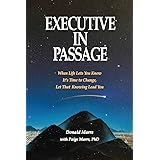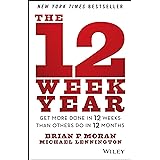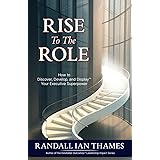The thought of changing jobs or making a significant career change can be daunting, often stirring a mix of excitement and deep-seated apprehension. If you’ve just watched the video above, you’ve likely resonated with the presenter’s insightful observations about the core fears that hold many professionals back. It’s a common dilemma: you know you’ve outgrown your current role, feel underpaid, or simply yearn for new challenges, yet an invisible barrier seems to prevent forward movement. This hesitation isn’t merely laziness; it’s a powerful emotional response that, while sometimes protective, can become an unnecessary obstacle to your professional growth.
This article builds upon the video’s wisdom, offering a deeper dive into the five practical strategies for overcoming the fear of changing jobs. We’ll explore these methods in more detail, providing additional context and actionable insights to help you navigate your career transition with greater confidence and clarity. Understanding the roots of your fear and equipping yourself with effective coping mechanisms can transform a seemingly insurmountable challenge into a series of manageable steps toward a more fulfilling future.
Redefining Fear: Embracing Discomfort in a Career Transition
One of the most profound insights from the video is the realization that the fear we experience when contemplating a job change is rarely life-threatening. Unlike the primal fear that keeps us safe from real dangers, such as a speeding car, the anxiety surrounding a career move stems from discomfort. This distinction is crucial because it reframes our emotional response from a survival instinct to a manageable feeling. By acknowledging that it’s discomfort, rather than a genuine threat, we begin to chip away at its power over us.
This discomfort often manifests in two primary forms: the fear of new people and the fear of new processes. Moving to a new company, even within the same industry, is akin to stepping onto a new stage with a completely different cast and script. You might leave behind a “work family” where bonds have been forged over years, where inside jokes are understood, and where social interactions are effortlessly comfortable. The thought of having to build new relationships, decipher new social cues, and integrate into a different corporate culture can be emotionally draining, especially for those who cherish established connections. It’s like leaving a familiar, cozy armchair for a new, unknown seat; while it might be better, the initial unfamiliarity can be jarring.
Similarly, the fear of new processes can be a significant deterrent. In your current role, you likely operate with an almost intuitive understanding of how things get done, who to ask for what, and the intricate workflows that govern daily tasks. You are a master of your domain, effortlessly navigating systems and procedures that have become second nature. A new job, however, means returning to square one: learning new software, understanding different departmental responsibilities, and adapting to entirely new operational methodologies. This loss of mastery, even temporarily, can feel like a step backward, triggering a reluctance to venture into the unknown. It’s the feeling of having to learn to swim all over again, even if you know you’ll eventually find your stroke.
The Power of Perspective: Envisioning Your Future Beyond Your Current Job
When facing the overwhelming prospect of changing jobs, it’s easy to get lost in the immediate anxieties. However, a powerful strategy is to zoom out and vividly imagine alternate scenarios, providing a clear contrast that can catalyze action. The video astutely encourages us to consider not just the potential benefits of a new role, but also the hidden costs of staying put. Imagine your career as a journey on a flowing river; while staying in a comfortable eddy might seem appealing, it eventually leads to stagnation. The true current of growth lies downstream.
Consider scenario number one: you successfully make a career transition, adjust to the initial discomfort, and find yourself in a role that offers growth, better compensation, and greater fulfillment. While the path might have its bumps, the long-term outcome is a happier, more engaged professional life. Now, imagine scenario number two: you remain in your current job for another 5, 10, or even 15 years. If your current situation is marked by a lack of growth, underpayment, or sheer boredom, what kind of person would you become? The video rightly points out the risk of becoming resentful, grumpy, and constantly irritated – a state that impacts not only your mental health but also your relationships with those around you. This long-term stagnation can be far more damaging than the temporary discomfort of a job search.
By engaging in this honest self-reflection, you create a compelling internal narrative. If the thought of enduring your current situation for another decade fills you with dread, that visceral reaction can serve as a potent motivator. It transforms the vague fear of change into a concrete understanding of the potential regrets of inaction. This exercise in perspective isn’t about shaming yourself; it’s about empowering you with the clarity needed to choose a future that aligns with your aspirations, rather than settling for a path of quiet desperation.
Igniting Your Purpose: The Antidote to Job Change Anxiety
Often, the most effective way to combat fear is to override it with an even stronger emotion: excitement. Just as a thrilling roller coaster ride blends apprehension with exhilaration, a purposeful career change can turn anxiety into anticipation. The key lies in finding a purpose that is so compelling, so deeply meaningful, that it dwarfs the discomfort of the transition. Without a clear and powerful ‘why,’ the perceived risks of leaving a cushy, albeit unfulfilling, job will almost always seem too high.
Purpose can manifest in many forms. For some, it’s a specific monetary goal, such as securing a salary increase from $52,000 to $70,000 to fund a first home or annual overseas vacations. The video highlights how newcomers often have a stronger negotiating position than long-term employees, making substantial salary bumps a very real possibility. However, financial goals alone might not be enough to sustain motivation through a challenging job search. It’s when these monetary aspirations connect to a broader vision for your life that they truly become powerful. Imagine not just the extra income, but the freedom and experiences that money enables—more time with family, sabbaticals, or the flexibility of remote work. This holistic vision for your lifestyle, 10 years down the line, can create an irresistible pull.
Beyond money and lifestyle, purpose can also be found in fulfillment. The video touches on the profound satisfaction derived from tasks like training new team members, even if it’s not your primary role. This feeling of being “meant to do this,” where skills align with passion, is an invaluable compass for career direction. Soul-searching to identify these fulfilling activities helps you connect potential new roles to a deeper sense of meaning. When you vividly imagine a future where your work genuinely excites you and supports the life you dream of, the fear of changing jobs begins to fade, replaced by a surge of purpose-driven energy.
Building Resilience: Embracing Rejection as a Stepping Stone
The fear of rejection is a universal human experience, extending far beyond the realm of job searching. Whether asking someone on a date or pitching a startup, the prospect of being told “no” can be paralyzing. However, the video offers a crucial perspective: rejections are not just inevitable, they are often a prerequisite for achieving ambitious goals. The bigger your aspirations, the more “nos” you are likely to collect on your journey to a “yes.” This understanding transforms rejection from a personal failing into a necessary part of the process of finding new opportunities.
The story of the speaker’s own experience securing funding for a feature film vividly illustrates this point. Facing dozens of rejections, almost giving up, only to secure funding on the 50th pitch, highlights the sheer perseverance required. It demonstrates that each “no” is not a judgment of your worth, but simply a step closer to the right opportunity. Similarly, Napoleon Hill’s Gold Rush analogy in “Think and Grow Rich” powerfully reinforces this idea. The miner who quit “three feet away from gold” serves as a poignant reminder that giving up prematurely can mean missing out on significant success. The gold, in this case, represents that ideal job or fulfilling career path that might be just around the corner.
Mentally preparing yourself for rejection is not about inviting negativity; it’s about building resilience. By acknowledging that you will likely face 10, 20, 50, or even 100 rejections before finding the right fit, you detach your self-worth from each individual outcome. Instead, each rejection becomes data, an opportunity to refine your resume, sharpen your interviewing skills, or expand your professional network. It’s a process of elimination, bringing you closer to the “gold” – a job that truly values your contributions and aligns with your career aspirations. This proactive mindset transforms the job search into a strategic endeavor, where patience and persistence are your most valuable assets.
Conquering the Overwhelm: Breaking Down the Monster of Job Search
The sheer enormity of a job search or career change can be one of its most intimidating aspects. It often appears as a monolithic “monster,” overwhelming us with its perceived complexity and the multitude of tasks involved. This feeling of being dwarfed by the challenge can trigger procrastination and paralysis. However, a potent strategy for overcoming this mental barrier is to dissect the “monster” into its smallest, most digestible components. This isn’t just about creating a high-level to-do list; it’s about breaking tasks down to a level of detail that feels foolproof and achievable, even on your most unmotivated days.
Consider the task of “updating your resume,” which itself can feel like a mini-monster. Instead of one daunting item, break it down: * **Step 1:** On Saturday at 3:00 PM, pull up your old resume file. Just open it and read through it for 15 minutes. * **Step 2:** On Monday evening, after dinner, add your most recent work experience and key accomplishments from the last year. Focus only on this section. * **Step 3:** By Wednesday, review the “Skills” section and add any new proficiencies you’ve gained or relevant software you’ve learned. * **Step 4:** Over the weekend, research two job descriptions that interest you and tailor your resume’s summary statement to align with their requirements. * **Step 5:** Find one trusted contact to review your updated resume for feedback.
The key here is to make each step so small and specific that it takes minimal mental energy to begin. Scheduling these micro-appointments with yourself, as the video suggests, further cements your commitment. It creates a sense of accountability without the pressure of an overwhelming workload. When you look at your to-do list and see “read old resume” instead of “overhaul entire resume,” the resistance drops significantly. This methodical approach builds momentum, step by tiny step, gradually chipping away at the perceived difficulty of the job change process. By consistently taking these small, deliberate actions, you demonstrate to yourself that the “monster” is, in fact, an assembly of manageable pieces, empowering you to move forward confidently.
Embracing these five strategies can profoundly shift your perspective on changing jobs. By redefining fear as discomfort, envisioning a more fulfilling future, cultivating a strong purpose, embracing rejection, and breaking down tasks, you equip yourself with the tools to navigate a career transition successfully. Imagine, just one year from now, working in a role that genuinely excites you, where you feel valued and challenged, rather than stuck and bored. The journey to overcoming the fear of changing jobs begins with these deliberate, courageous steps.









